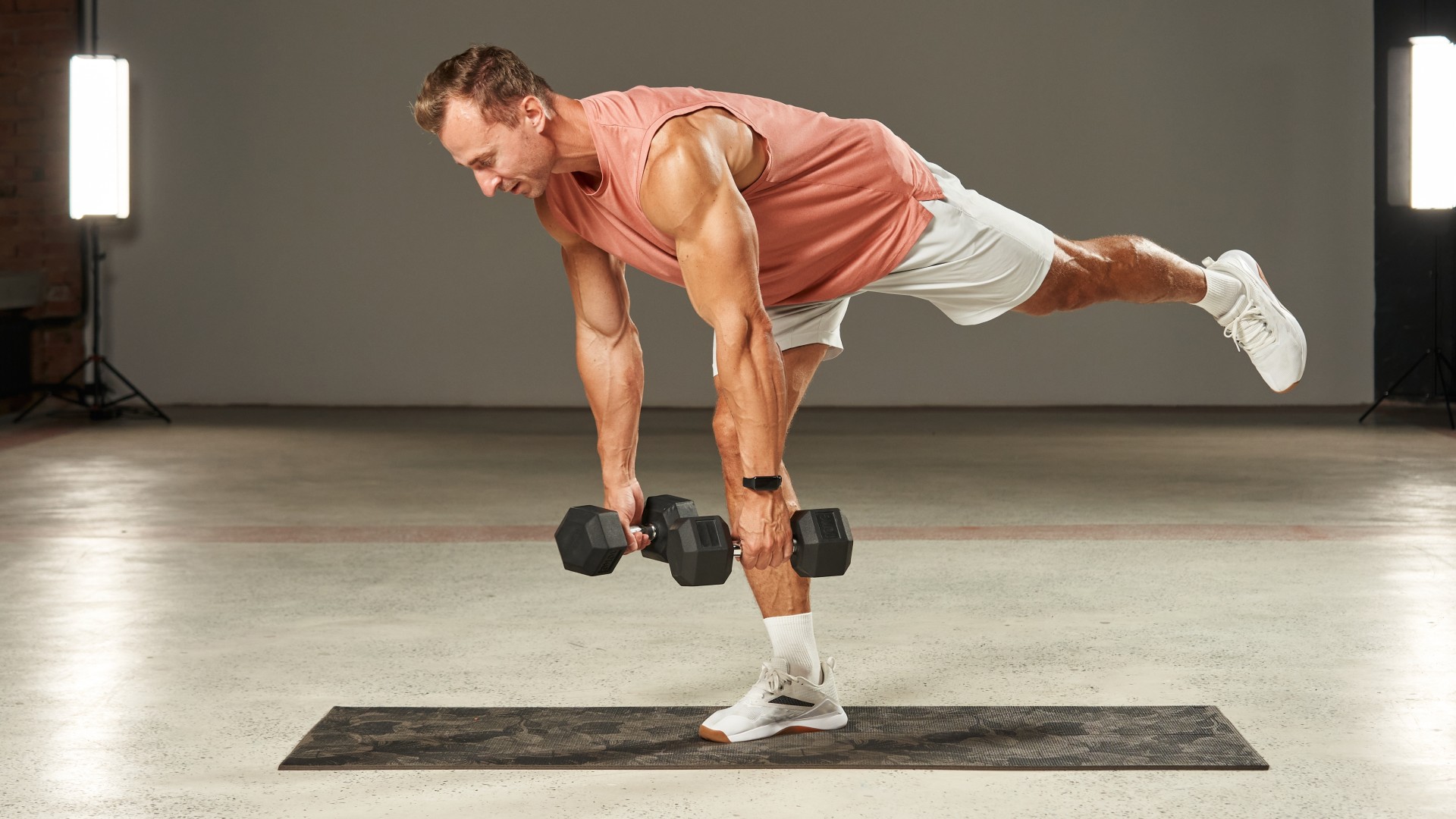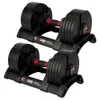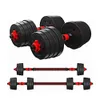
When I teach classes outdoors, I need to get creative with the exercises I program to build lower body strength and torch the midsection muscles of clients.
Building a stronger core and challenging the large and powerful muscle groups in the glutes and legs isn’t as simple without gym machines, heavy barbells and a playground of the best gym equipment.
Luckily, you can work your muscles hard enough to grow stronger using a heavy dumbbell, these three bodyweight exercises and a few handy techniques, which I also reveal below. You can perform the exercises using your body weight or add a dumbbell if you have equipment available, so get ready to put your lower body through the wringer.
What are the 3 bodyweight exercises you can do using a dumbbell?
I recommend one of the best adjustable dumbbells for anyone lacking space or access to the gym. You can quickly dial up the weight or scale back for those smaller muscle groups in just a few seconds. Otherwise, a hex dumbbell or similar works well.
Choose a challenging weight, then check out my 5 ways to build muscle without lifting heavy weights for ideas on adding intensity to your regime.
1. Cossack squat
Learning how to Cossack squat won’t just build stronger legs and core muscles — the bodyweight exercise develops flexibility and range of motion, strengthens your lower back and improves joint mobility.
Only add a dumbbell to the Cossack squat when you can achieve sufficient depth in the side squat, focusing on maximum range of motion first and encouraging proper form before adding resistance to an already advanced lower body exercise.
Sign up to get the BEST of Tom's Guide direct to your inbox.
Get instant access to breaking news, the hottest reviews, great deals and helpful tips.
Hold the dumbbell close to your chest using an underhand goblet grip or rack it to your shoulder to emphasize one side of the body at a time. The mobility exercise requires power to drive up from a deep side squat position, and adding weight can also help you sit back into your heels and provide counterbalance while working your body unilaterally (one side at a time), improving balance, coordination and stability.
2. Heel-elevated goblet squat
Elevating your heels turns a standard squat into a quad-dominant exercise. You can use barbell plates or similar and the thicker the plate, the more challenging the exercise becomes and the more front-loaded you can make the squat.
Learn how to goblet squat following our video, then add weight when you can lower your thighs to at least parallel to the floor. Keep the weight close to your chest, sit your weight into your heels and drive up powerfully from the bottom of the squat. Brace your stomach, using your core muscles to help drive the movement.
3. Gorilla squat press
Although the overhead press is primarily an upper-body exercise reserved for the shoulders, triceps and pecs, adding a gorilla squat quickly turns it into a mobility drill and engages the lower body, hips and core muscles for balance and stability, building flexibility.
Practice sitting into the gorilla squat first while keeping your heels pressed down and knees pushed out in line with your toes. Your spine should be neutral and back flat, then lift one arm at a time, ensuring you can extend your arm fully and open your chest. Only add a dumbbell press when you feel comfortable with the movement pattern.
Done properly, the upper and lower body learn to recruit together; the upper body pressing and supporting the weight overhead, your core muscles helping to drive and stabilize, your lower body balancing, aiding flexibility and strengthening and your spine and back muscles engaging as you press.
My verdict on the 3 lower-body dumbbell exercises
Although progressive overload — slowly increasing training volume over time — is the “typical” way to hit your gym goals, get stronger and build more muscle, not everyone has a well-stocked home gym at their fingertips. If you’re looking for ways to increase intensity without picking up heavier weights, try a few of these tips.
First, take the exercises above and create supersets, giant sets, or drop sets; all reduce rest and increase the length of your working sets. For example, giant sets involve performing three exercises or more back-to-back, and drop sets take your muscles to failure by adding sets or reps past your working sets — think of them as an extension to your program.
Another popular technique is time under tension, which I teach clients a lot. Simply slowing an exercise down extends the duration of a rep, working muscles hard through a full range of motion.
You can work eccentrically, concentrically, or both; an example of focusing on eccentric loading would be slowing down as you lower into a squat while concentric contraction refers to the lifting phase of the squat, as you push the ground away to stand.
You could also opt for high-rep training, performing a higher number of reps to overload the muscles, typically reserved for endurance training at lighter loads. I’d only recommend this option if you’re working at a much lighter weight and those working at a challenging, heavy weight can stick to the hypertrophy training techniques; 3-4 sets of 8-12 reps, as a guideline.
More from Tom's Guide
- Just one bodyweight exercise strengthens your glutes, hips and lower back — and boosts flexibility
- What is the 6-12-25 method and is it good for building muscle?
- Fitness instructor says these 3 beginner-friendly moves are the best way to build full-body muscle

Sam Hopes is a level 3 qualified trainer, level 2 reiki practitioner and senior fitness writer at Tom's Guide. She is also currently undertaking her Yoga For Athletes training course. Sam has written for various fitness brands and websites over the years and has experience across brands at Future such as Live Science, Fit&Well, Coach, and T3.
Having worked with fitness studios like F45 and Virgin Active, Sam now primarily teaches outdoor bootcamps, bodyweight, calisthenics and kettlebells. She also coaches mobility and stretching-focused classes several times a week and believes that true strength comes from a holistic approach to training your body.
Sam has completed two mixed doubles Hyrox competitions in London and the Netherlands and finished her first doubles attempt in 1:11.



